Before I took birding seriously, I wondered why guides devoted full-page layouts to “confusing fall warblers.” As it turns out, many things about fall birding are confusing. And, as with many confusing things in life, most of them come down to hormones—or the lack thereof. Just like singles primping in the mirror before a party, in the spring, male birds put on their best colors and warm up their vocal cords to serenade better than any other guy. Throughout the summer, they continue to swagger, strut, and belt out their songs to keep the females and offspring in contact and to warn off any potential rivals. But by the fall, the stakes are much lower. Frankly, they couldn’t care less how they look or sound as long as they have strong flight feathers. Many year-round residents are molting. For example, you’ll see many sad-looking bald cardinals at your feeders. Migrants passing through the area will have molted into a muted version of themselves and vocalize far less.

Photo credit: Northern Cardinal by Sally Stone/Audubon Photography Awards
This autumnal shift in priorities can make birds, especially warblers, particularly hard to identify. Here are some tips to make identification easier when you get back to your bird guide or app:
• Where is the bird perching?
• What is its size?
• What color are its back and chest?
• Does it have an eye ring?
• Does it have wing bars?
• What is the color under the tail?
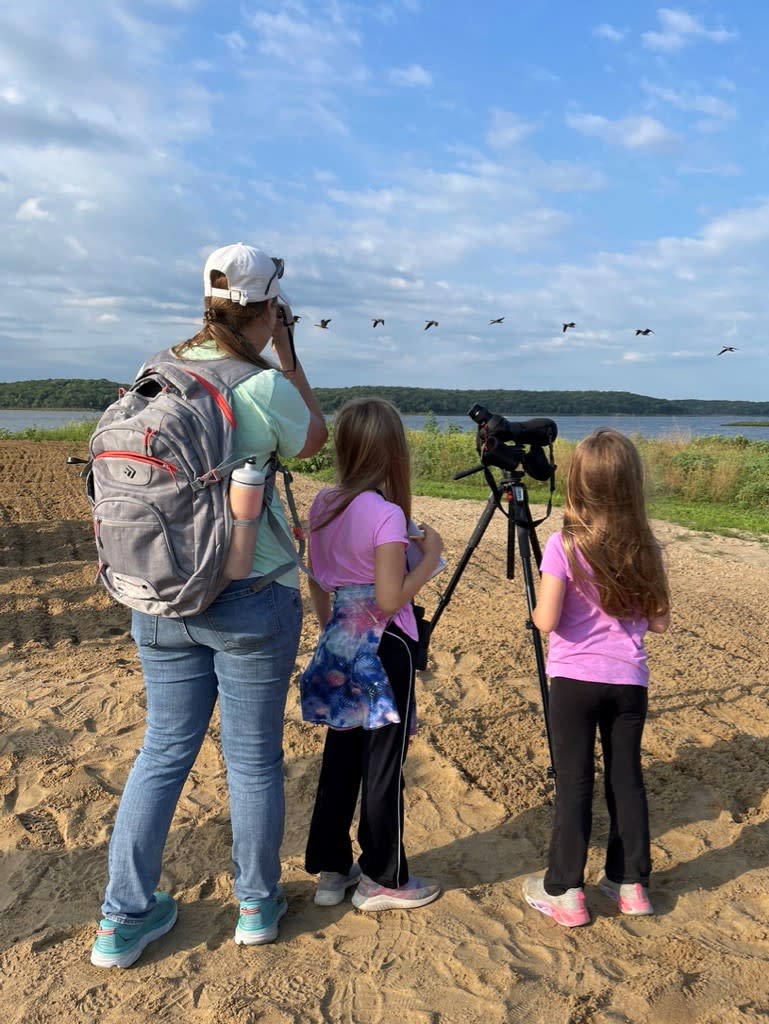
Sweetly positioned along the central flyway, Lawrence offers fantastic fall birding, whether you’re looking for migrants or year-round residents. If you’d like to track where and when specific birds are traveling through the area, check out this nifty fall migration map from National Audubon. The migration is just beginning!
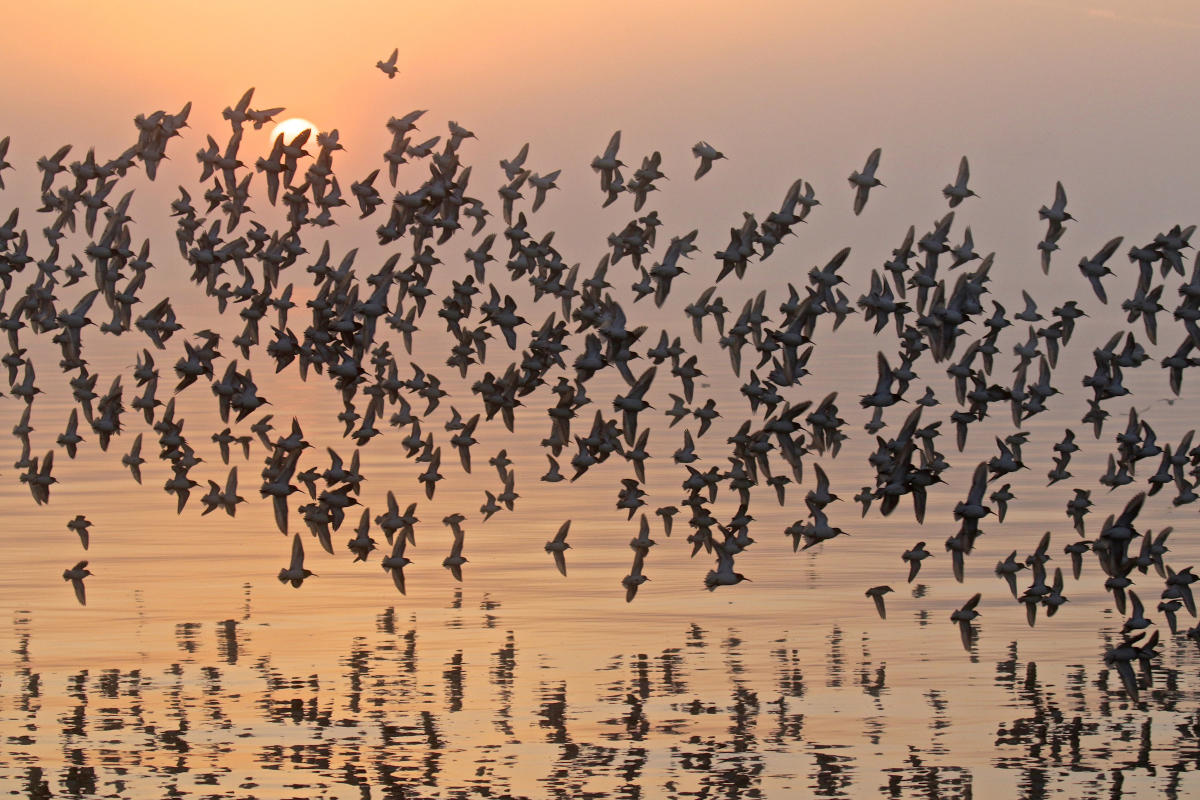
Photo credit: Sandpiper migration by Karl Bardon/Audubon Photography Awards
I’ll admit, for the past couple of blistering weeks on hell’s front porch, given the choice between hitting my hand with a hammer and birding… Still, I took several jaunts and even managed to enjoy myself.
Lawrence Nature Park
Those of you following this blog will remember that, in the winter, I had great luck finding red-headed woodpeckers gorging on a plethora of acorns at this little gem in northwest Lawrence. Its shady, easy, relatively cool, leafy trails offered a respite from the suburban hubbub now that the KU students are back in force.
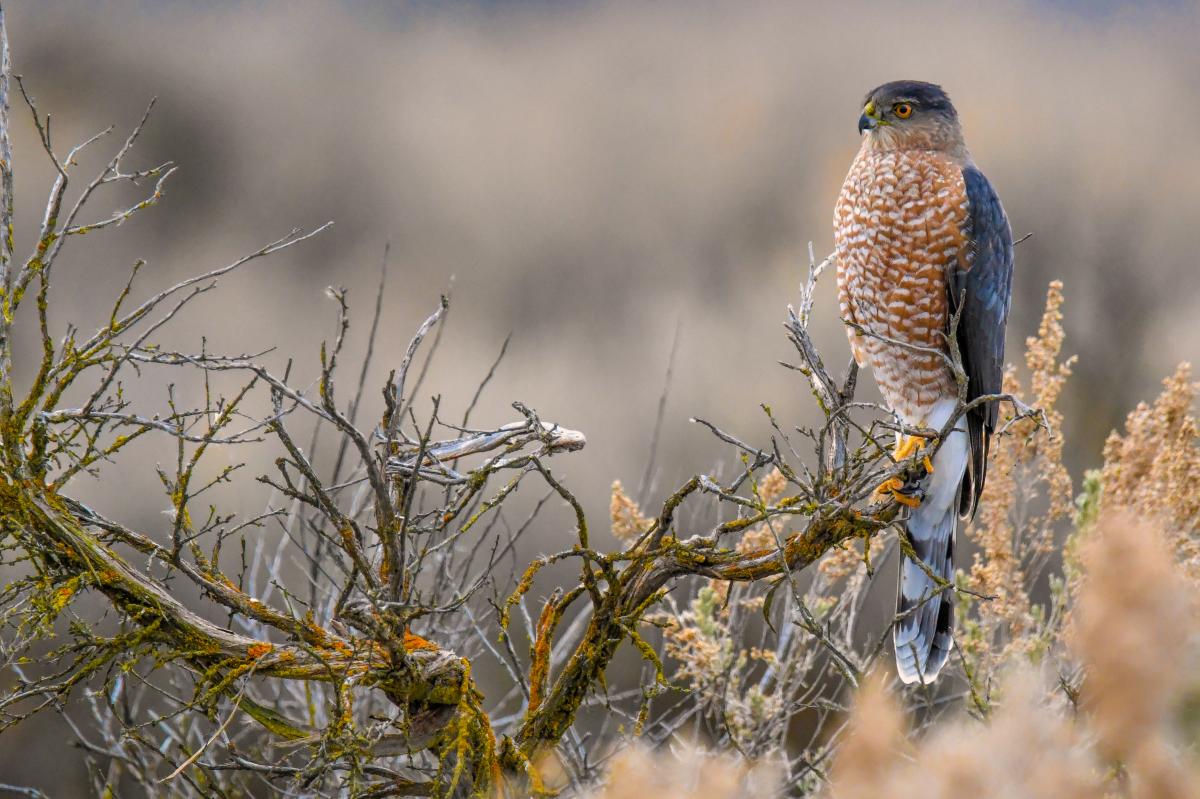
Photo credit: Cooper's hawk by David Hutson/Audubon Photography Awards
Here’s what I saw: a red-bellied woodpecker, a Cooper’s hawk, a yellow-throated vireo, red-eyed vireos, American crows, black-capped chickadees, tufted titmice, white-breasted nuthatches, a blue-gray gnatcatcher, a Carolina wren, a gray catbird, eastern bluebirds, American robins, American goldfinches, a northern cardinal, and indigo buntings. A few seed ticks decided to come home with me as well, so make sure to take precautions—wearing a hat, tucking pants in socks, bathing and doing a thorough after-hike check, etc.—before the frost.
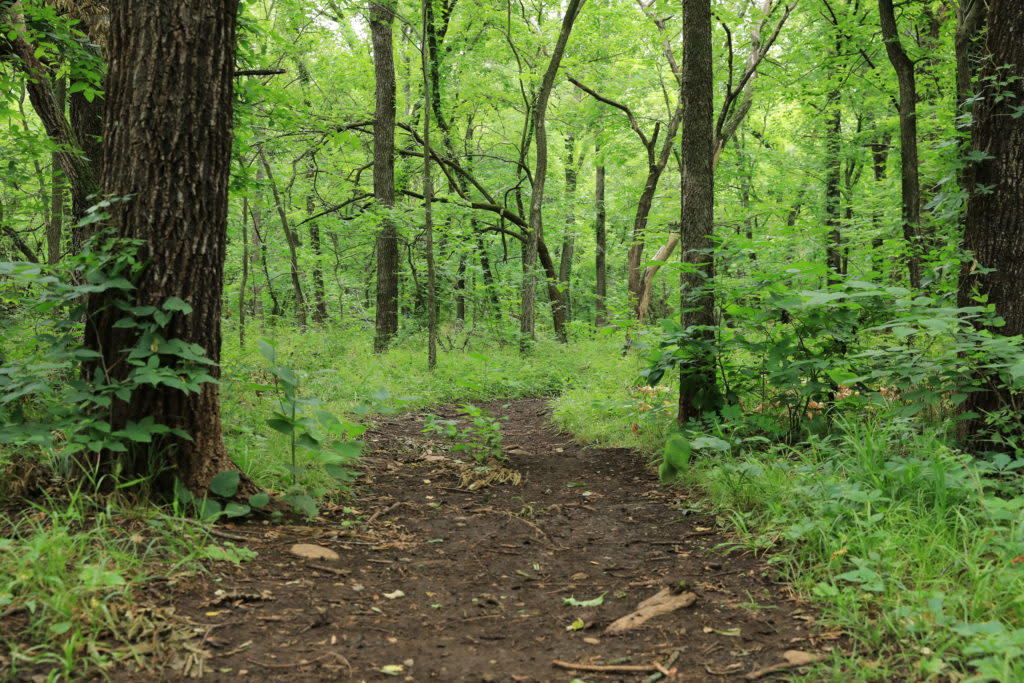
Image courtesy of Friends of Lawrence Area Trails
Lawrence Nature Park is on the west side of South Folks Road, about a mile off of 6th Street. Parking is plentiful, or if you have a bike, you can put it on the all-electric number 6 Lawrence Transit bus and get off at Folks.
Clinton Lake Marina

You’ll remember that I heard and nearly saw a painted bunting here this summer. It’s a reliably great place for seeing rarer birds, especially when you’re on a Jayhawk Audubon-sponsored hike with crackerjack ornithologist Roger Boyd. Three dozen or more of us showed up early on the sand bar for looks at ring-billed and Franklin gulls, most in their winter plumage.

We also saw Forster’s and black terns (black was a lifer for me) in various transitions of plumage. A group of “peeps” stumped even Roger, who initially called them Baird’s sandpipers because of their buffy, sharp cut-off on the breast and their dark legs. But the bills looked too long, slender, and curved to fit Baird’s. When a single winter-feathered semipalmated sandpiper flew in, he was able to identify what he thought were Baird’s sandpipers as at least sandpipers based on the size comparison. (See, even the experts get stumped.)

Photo Credit: Scissor-tailed Flycatcher by Vic Prislipsky/Audubon Photography Awards
We also saw several rafts of ducks—northern shovelers, mallards, and blue-wing teals. An osprey carrying a fish flew overhead, and scissor-tailed flycatchers made an appearance as well. Check out jayhawkaudubon.org for upcoming field trips.
Burroughs Creek Trail / Haskell Rail Trail

Part of the Lawrence Loop, a bicycle/walking trail that will one day soon completely encircle the city, this easy, paved trail follows a converted rail bed beginning between Oregon and Haskell Street off of 11th and directly across from Don’s Auto and ends just past the Haskell Indian Nations University Campus. If you’re in a car rather than on foot or on a bike, you can park in a lot by taking Learnard Street to 22nd and heading east.
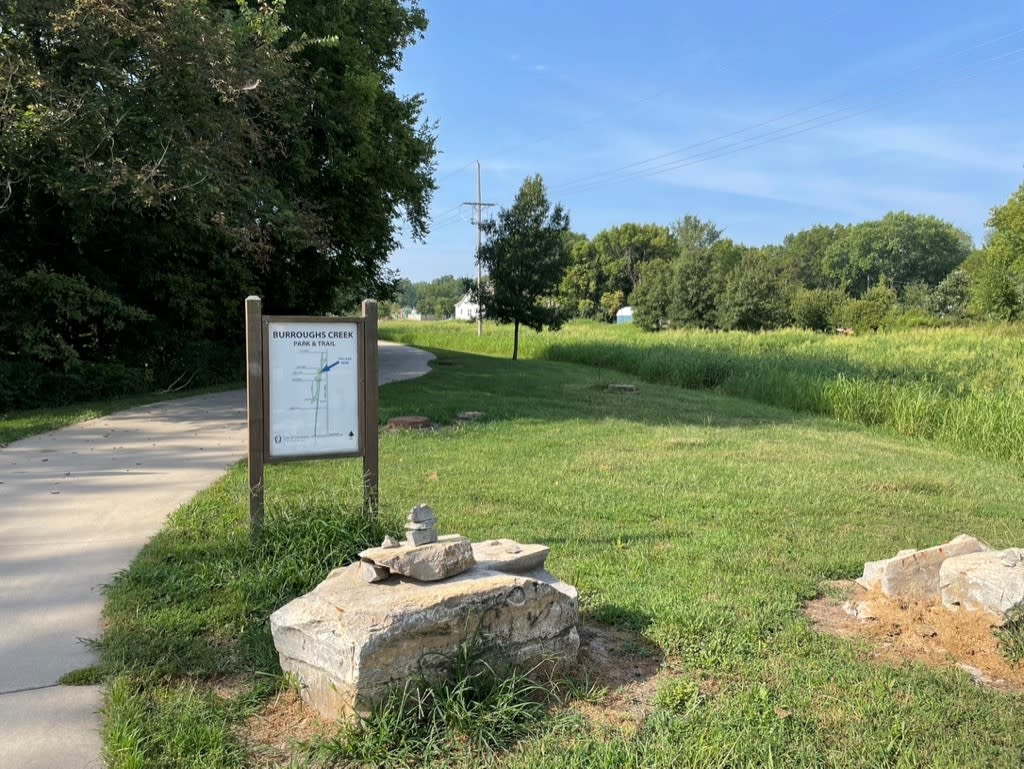
The trail runs along a creek bounded on either side by wetlands and riparian areas, making it a great spot for birding any time of the year…except perhaps the morning I took it, the morning of a day that, like a string of so many others, topped out at about 110 degrees F. Don’t get me wrong—the birds were right there on hell’s front porch with me, but at some point, I didn’t care anymore. (We all have birding days like this—I seriously considered riding my bike around the children and through the many water features on the splash pad adjacent to the trail at 15th Street). Other than two die-hard cyclists and one wilted individual with a broken flip-flop, I was the only human on the route.
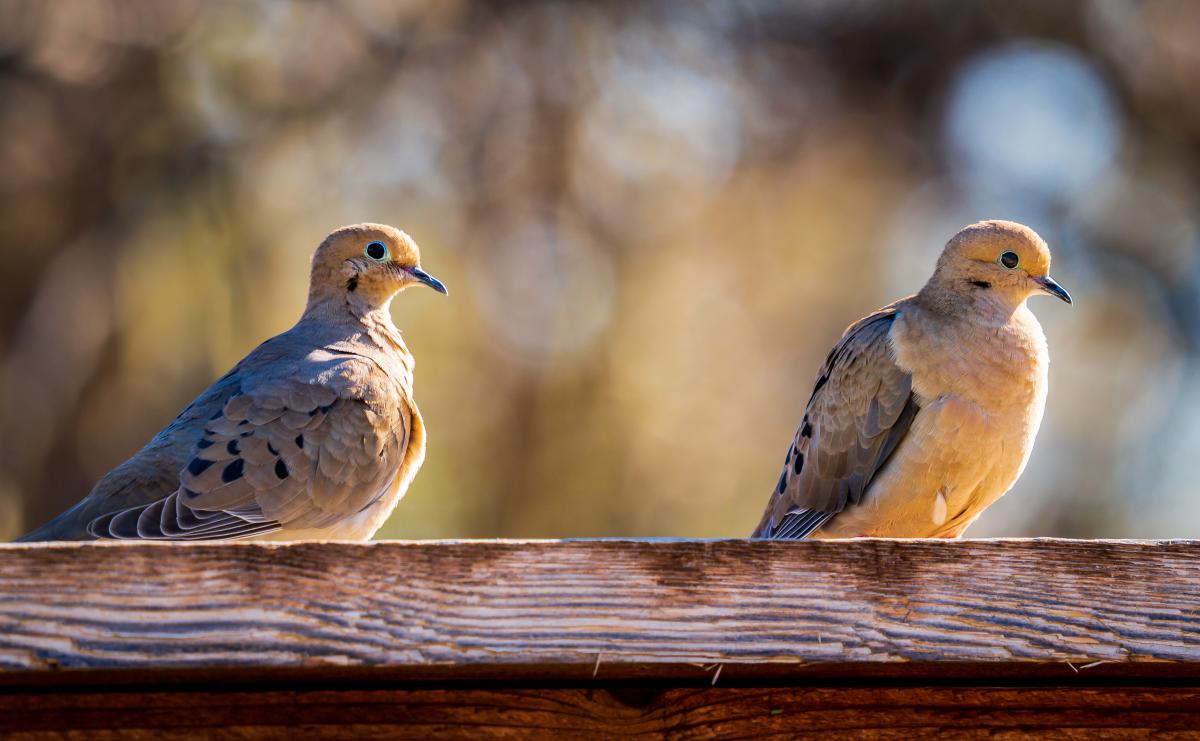
Photo credit: Mourning Doves by Steve Donovan/Audubon Photography Awards
Here are the birds who were coping alongside me: mourning doves, a red-shouldered hawk, a downy woodpecker, a northern flicker, some blue jays, American crows, a couple of gray catbirds, a northern mockingbird, some robins, a couple of house finches, quite a few adult cardinals feeding a whole host of jingling cardinal fledglings who hadn’t lived long enough to know that their home wasn’t an air fryer, and a hundred or more starlings chirring to each other in a snag off the trail.
Starling flocks are a sure sign of fall.




